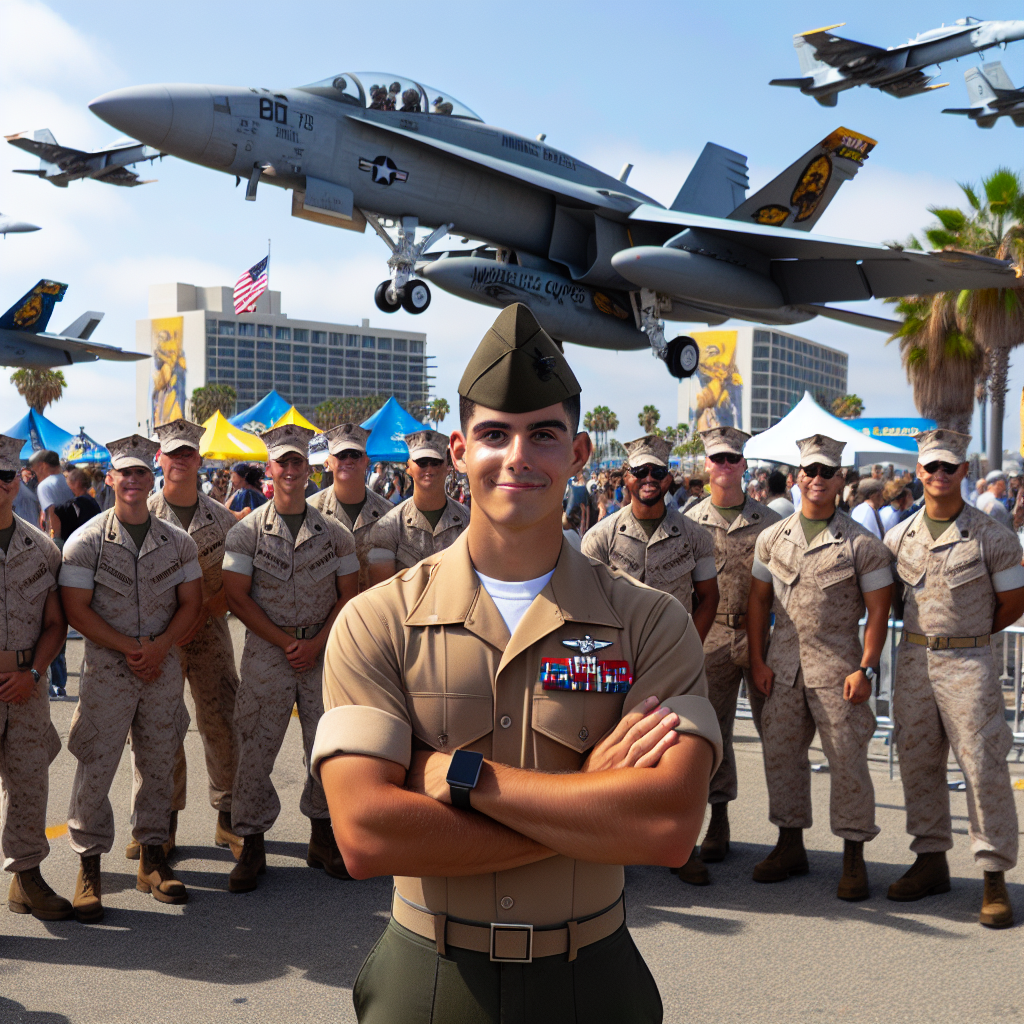In celebration of the 250th anniversary of the Marine Corps, the 2025 America’s Air Show took place from September 26th to 28th at the Marine Corps Air Station Miramar in San Diego County, Southern California. The event was free and open to the public, showcasing the base’s personnel, aircraft, and capabilities.
On November 10, 1775, the second Continental Congress decided to establish two Marine battalions as landing forces on ships, marking the birth of the Marine Corps. The air show served as a prelude to the November celebration, demonstrating the Marine Corps’ strength, precision, and teamwork in land, sea, air, and global operations.
The air show opened to the media on the 25th, with Colonel R. Erik Herrmann, the commanding officer of the air station, expressing anticipation for the audience. Military and civilian aircraft performers prepared a rich flying program for residents, along with ground displays of numerous aircraft, and Marine Corps personnel sharing their experiences of work, learning, and life.
“We have invited the silent drill platoon from the Marine Barracks Washington D.C., with 24 riflemen spinning rifles and tossing them in the air,” Herrmann said. Additionally, the Blue Angels flight demonstration team would perform around 2 p.m. each day, bringing the day’s flying activities to a fulfilling conclusion.
Herrmann mentioned the positive collaboration with the local community, emphasizing that the air show was a way to thank the people for their ongoing support year after year, welcoming guests from around the globe.
The MAGTF demonstration with a combat atmosphere would be highly captivating, featuring various types of aircraft displays and introductions alongside the aerial performances. Miramar has trained the initial two squadrons of Top Gun members who were later deployed on aircraft carriers. The famous movie “Top Gun” was filmed here.
Before attending, spectators were advised to review safety regulations, with non-citizens or individuals without green cards urged to bring their original passport (not copies or phone photos).
Lieutenant Ben Bushong, a public affairs officer who has served in the Navy for about ten years, including as part of the Blue Angels flight demonstration team for the second year, described the experience as unforgettable. The team’s six pilots would fly F/A-18 Hornets, with others handling “Fat Albert,” the blue and white C-130J Super Hercules transport aircraft.
Typically, the Super Hercules would perform for 10 minutes, followed by a 45-minute flight by the Hornet pilots – eight aircraft in total, six flying and two on standby each time.
The Blue Angels typically train in winter and travel for performances from mid-March to mid-November. “Some of us are on the road for 300 days a year, and we are fortunate to represent the capabilities of the Marine Corps to the American public around the world,” Bushong stated, acknowledging the challenging yet fun nature of the tours.
Having grown up in San Diego, Bushong’s eldest son, over four years old, also enjoys watching the air performances. Reflecting on his deployment at sea, he appreciated the interactive community engagement opportunities that the Blue Angels provided.
The Blue Angels Fat Albert flight demonstration team comprises Captain Isaac Becker, who serves as the pilot of the Super Hercules and works as a logistics officer within the team. With eight years of Marine Corps service and in his second year with the Blue Angels, Becker disclosed that they participate in 32 air shows annually, requiring around 50 maintenance personnel and roughly 38,000 pounds of equipment per event – essentially a mobile support team for the performers.
While each team member comes from the fleet and serves for 2-3 years before returning, representing the entire fleet during their time with the Blue Angels. Becker highlighted that the essence of the Marine Corps was expeditionary, with most units aspiring to be deployed at the front lines in distant lands following national orders. The Blue Angels, however, showcase expectations for the Marine Corps within the U.S., highlighting teamwork, professionalism, military pride, and inspiring youth to serve the nation.
On becoming a pilot, Becker emphasized the need for dedication and hard work through continuous learning and practice, underscoring the importance of motivation and commitment to achieve the position.
In conclusion, Becker affirmed the team’s rigorous training to ensure efficient task completion, expressing joy in performing for the audience despite the unique challenges faced as part of the Blue Angels team.

